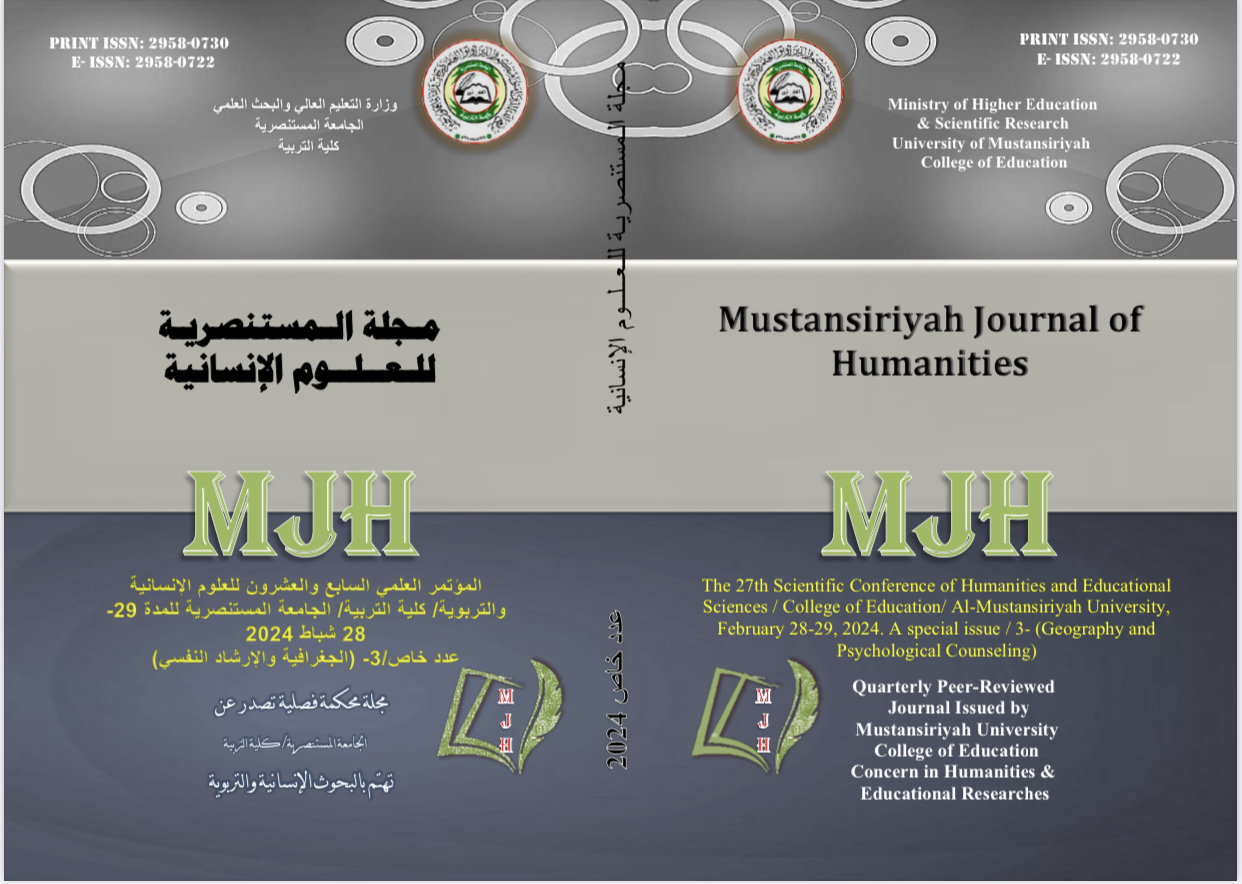The role of climatic changes in exacerbating the phenomenon of wind erosion over the region extending between governorates (Muthanna, Qadisiyah and Dhi Qar) and its environmental effects
DOI:
https://doi.org/10.47831/mjh.v3iخاص.495Keywords:
Wind erosion, climate change, and its environmental effectsAbstract
Climate changes have exacerbated many problems in Iraq, and among these serious problems is the problem of exacerbation of wind erosion, which is one of the problems with negative effects on dry and semi-arid lands in the world, including most of the lands of Iraq that are exposed to this phenomenon in varying degrees, as the research deals with one of the most important The dangerous problems that the region that extends between the governorates of (Dhi Qar, Al-Qadisiyah and Al-Muthanna) is exposed to is wind erosion. The activity of this phenomenon has been helped by climate changes that have led to less and less rainfall in recent years, high temperatures, an increase in evaporation and an increase in wind speed that does not decrease in speed. (3 km / h), lack of humidity and lack of natural vegetation. In addition to the nature of the geological formation of the region, the presence of sedimentary formations containing sand, mud, and silt from the Quaternary time deposits contributed to increasing the effect of wind erosion and making it a permanent source of sediment feeding for the winds. Humankind, such as the presence of random dirt quarries, breeze roads, and the wrong methods used in agriculture and overgrazing, played a role in the exacerbation of this phenomenon, which greatly affected the region, which led to this region being a source of dust storms affecting both the provinces of Dhi Qar and Basra and its extensions. In addition, the region's failure to maintain its permanent vegetation cover resulted in the formation of some manifestations such as active sand dunes that affected nearby agricultural lands and transportation routes, including the Baghdad-Basra highway, the Samawah-highway road, and the service facility, and caused some respiratory diseases for the residents of the region. The study and its adjacent areas, as well as the threat of agricultural land and the burial of cultivated plants, were estimated the vulnerability of areas affected by wind erosion, which vary spatially depending on the equation proposed by (Shiyatyi) and its spatial distribution, and the research reached the possibility of mitigating the impact of wind erosion on the study area by following some methods and treatments To reduce its impact, mitigate its damage, and preserve the natural environment and human activities.





